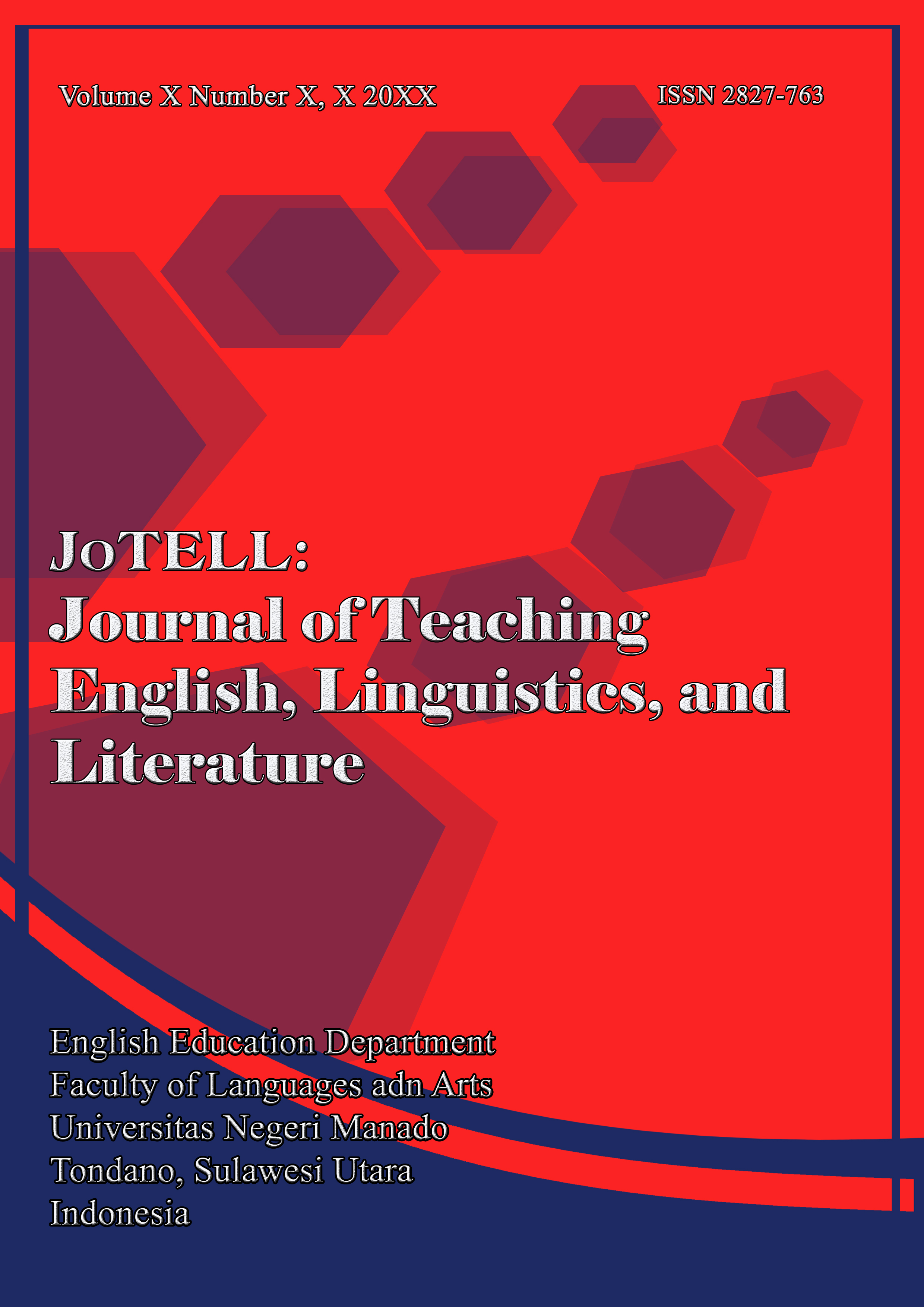USING REPETITIVE WRITING TO IMPROVE SEVENTH GRADE STUDENTS’ VOCABULARY MASTERY AT SMP GPDI BEREA TONDANO
DOI:
https://doi.org/10.36582/jotell.v1i12.5193Keywords:
Improving, Vocabulary, Repetitive Writing, Effectivity.Abstract
In learning a language, there are some variant levels from the low to the advance level where people going to learn from the simple to the more complex aspects of a language. One of the basic aspects is the vocabulary. This research aims to study a method called “repetitive writing†to see the effectivity and efficiency in improving students’ vocabulary mastery. This research took place in SMP GPdI Berea Tondano on the seventh grade students. This research used a quantitative approach in collecting the data and used pre-experimental research design in the form of “one group pre-test post-test design†and used mean formula for data analysis. The research instrument used a multiple choices test which containts of two main part: translation and definition. There were two main data, the pre-test score (before the treatment) and the post-test score (after the treatment). The result showed that the score after the treatment is higher with the mean score of 86,5, compared to the mean score before treatment which was 62, which indicates that there were some improvements in students vocabulary performance. From the result, it can be concluded that the repetitive writing method is effective and efficient so thus it can be introduced by teacher and applied by students to improve students vocabulary mastery. It is suggested to the teacher to use the repetitive writing method in learning process in order to help the students in their activity of mastering vocabulary
References
Altalhab, S. (2018). Short- and Long-term Effects of Repetition Strategies on Vocabulary Retention. 2010, 146–149.
Andries, F., & Rombepajung, P. (2019). The Application of Special Self-Made Word Card for Vocabulary Teaching Particularly Irregular Verbs. 383(Icss), 841–843. http://scholar.google.co.id/citations?view_op=view_citation&hl=id&user=HI2HFGoAAAAJ&citation_for_view=HI2HFGoAAAAJ:Tyk-4Ss8FVUC
Candry, S., Deconinck, J., & Eyckmans, J. (2018). Written repetition vs. oral repetition : Which is more conducive to L2 vocabulary learning ? 2, 72–82.
Hastjarjo, T. (2019). Rancangan Eksperimen-Kuasi Quasi-Experimental Design. 27(2), 187–203. https://doi.org/10.22146/buletinpsikologi.38619
Liando, N. V. F. (2009). SUCCESS IN LEARNING ENGLISH AS A FOREIGN LANGUAGE. Leksika, 146–164. https://scholar.google.co.id/citations?view_op=view_citation&hl=id&user=ad4tYg4AAAAJ&citation_for_view=ad4tYg4AAAAJ:W7OEmFMy1HYC
Liando, N. V. F., & Tatipang, D. P. (2022). English or Indonesian Language? Parents’ Perception Toward Children's Second Language Learning Context. Jurnal Lingua Idea, 13(1), 61-75.
Maru, M. G., Nur, S., & Lengkoan, F. (2020). Applying Video for Writing Descriptive Text in Senior High School in the Covid-19 Pandemic Transition. 4(3), 408–419. https://doi.org/10.26858/ijole.v4i3.14901
Moore, G. W. (1983). Developing and Evaluating Education Research. Boston: Macmilan Heineman.
https://www.amazon.com/Developing-evaluating-educational-research-Moore/dp/0316579599
Liando, N. V. F., & Mozes, G. N. (2019). The Implementation of Phonic Method for Enhancing Very Young Learners ‟ Vocabulary. 438(Aes 2019), 28–32. http://scholar.google.co.id/citations?view_op=view_citation&hl=id&user=aw3uCilAAAAJ&citation_for_view=aw3uCilAAAAJ:u5HHmVD_uO8c
Sabudu, D. (2019). The Investigation Into Primac Effect on Student’ S. Klasikal, 6(1), 21–30.
Susanto, A. (2017). The Teaching of Vocabulary: A Perspective. Lingua Idea. 182–191.












